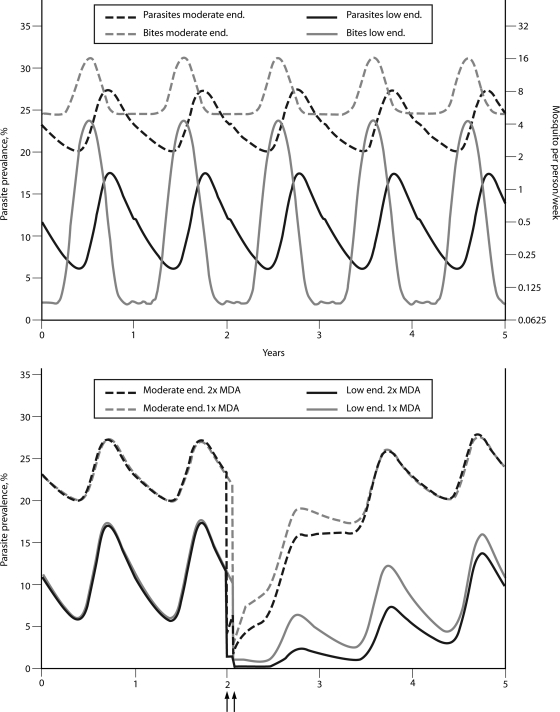Fig. 8.
Predicted impacts of mass drug administration in two settings of malaria endemicity, using two different transmission scenarios. (Top) Situation of seasonal transmission in an area of moderate endemicity and an area of low endemicity. In the area of moderate endemicity, parasite prevalence is ∼20% in the general population in the dry season, when people are exposed to ∼5 mosquito bites/person/week; in the wet season, parasite prevalence increases to ∼28% and mosquito exposure to 16 bites/person/week. In the setting of low endemicity, parasite prevalence is ∼5% in the dry season, when people are exposed to an average of one mosquito bite/2 months; in the wet season, parasite prevalence increases to ∼18% and mosquito exposure to 4 bites/person/week. (Bottom) Simulated impact of one or two rounds of MDA toward the end of the dry season. The timing of the MDA is indicated with an arrow; in the scenario where MDA is repeated, the gap between the two rounds of MDA is 1 month, and the correlation between coverage in the first and second rounds of MDA is 0.5. The drug used for MDA has the characteristics of artemether-lumefantrine, with an efficacy against asexual parasites of 95% and a duration of (submicroscopic) gametocyte carriage of 13 days after initiation of treatment. The coverage with the intervention is 95%.

